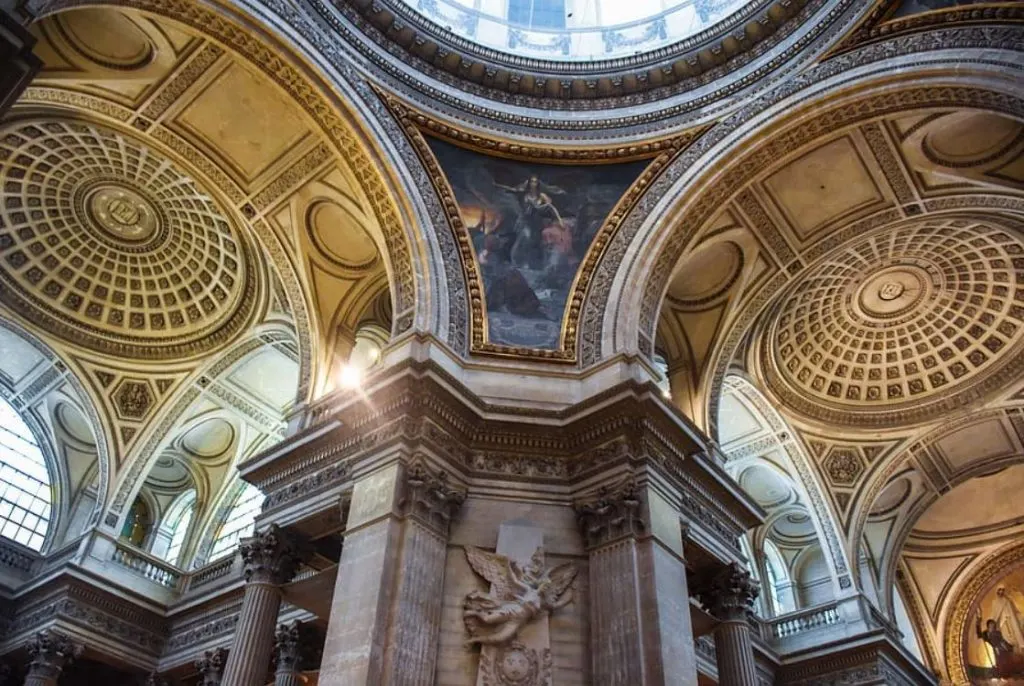There are plenty of examples of buildings that saw their purpose change over the course of history.
One of the most fascinating structures in Paris is one of these, mainly because of the turbulent period in which it was built.
In this post, we’ll take a closer look at some of the most interesting facts about the Panthéon in Paris, a landmark with an amazing dome that you absolutely must visit when you’re in the capital of France!
1. It was built on an important location ever since Roman times
The Panthéon in Paris, which is not to be confused with the Pantheon in Rome, one of the most famous landmarks in Italy’s capital, is located in the 5th arrondissement of Paris. This is one of the central districts of Paris on the Left Bank of the River Seine.
The neighborhood is referred to as the Latin Quarter which is also home to the prestigious Sorbonne University. Other famous landmarks in the area are Luxembourg Palace and the Luxembourg Gardens which are situated a few hundred meters to the west of the Panthéon.
The building was constructed on the Place du Panthéon, the square that was named after it, on the so-called “Montagne Sainte-Geneviève.” This elevated area has a history dating back to Roman times when Paris was still referred to as “Lutetia.”
This hill was referred to as the “Mount Lucotitius” and was the place where the forum, the central marketplace, of the city of Lutetia was located.

2. It was commissioned by King Louis XV for a particular purpose
Obviously, this wasn’t the reason that King Louis XV commissioned the construction of an enormous church in 1744. This location used to be occupied by the Abbey of St Genevieve, a structure that was built by Clovis, the first King of the Franks, in the year 508.
This original church held the remains of Saint Genevieve, the patron saint of Paris who led the resistance against the Huns in the year 451.

An immense abbey church was built over the original crypt of the Abbey of St Genevieve and the Panthéon was built as a monument in honor of the patron saint of Paris.

3. The building’s architect had spent a lot of time in Rome
It’s hard to deny the fact that Panthéon in Paris was based on the much older building with the same name in Rome. That’s mainly because the architect of the project, Jacques-Germain Soufflot (1713-1780), spent a lot of time in Rome.
In Italy, he became intrigued by Neoclassical architecture and studied the various buildings designed by both ancient architects and Donato Bramante, the original architect of Saint Peter’s Basilica.

4. The building’s dome was modeled on a little temple in Rome
One of the most fascinating facts about the Panthéon in Paris is that its magnificent dome was modeled on one of the most influential, yet smallest of all of the famous landmarks in Rome.
This fascinating little temple is referred to as the “Tempietto” and is situated within the courtyard of the San Pietro in Montorio church in Rome. This commemorative tomb was built in the early 16th century and ended up becoming one of the most influential structures in architectural history.
It’s hard to deny the similarities between the domes of this small structure in Rome and the immense dome of the Panthéon, right?
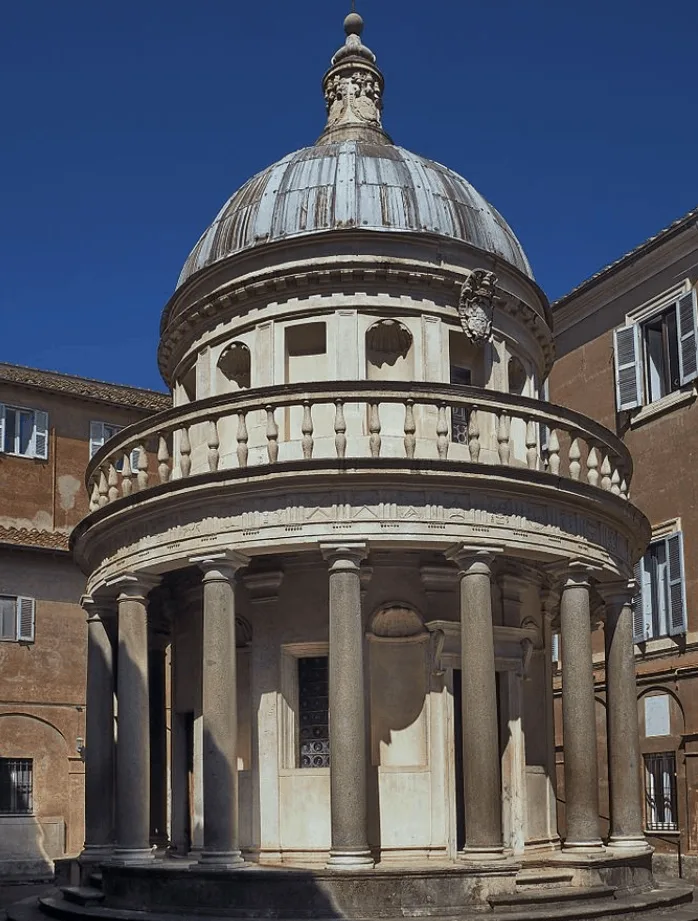
5. The Panthéon is an enormous structure
With similar buildings such as St. Peter’s Basilica in Rome and St. Paul’s Cathedral in London dominating the skylines of these cities, it wasn’t easy to rival those amazing structures. Regardless, the result of the Panthéon in Paris turned out to be pretty astounding.
The building took the shape of a Greek cross with the 4 naves being equal in length. Because of the portico was modeled on the Pantheon in Rome and which features Corinthian columns, the building is 110 meters (360 feet) long and just 84 meters (275 feet) wide.
The dome of the building reaches a total height of 83 meters (272 feet), which is still quite a bit shorter than the 136.57 meters (448.1 feet) of St. Peter’s Basilica, and also shorter than the dome of St. Paul’s Cathedral in London which is 111 meters (365 feet) high.
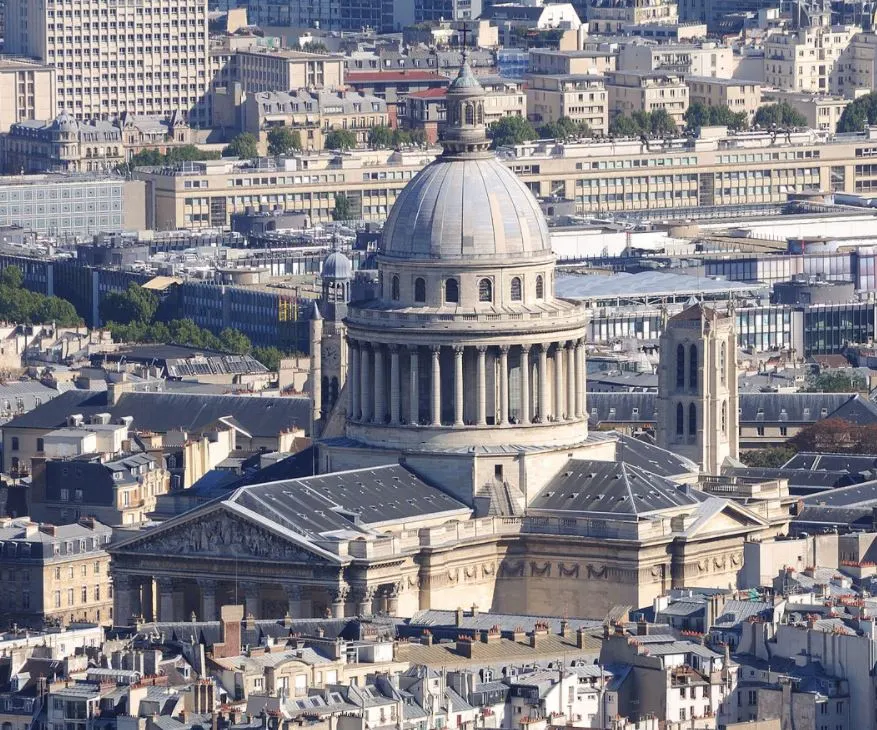
6. The church was completed during an important period in history
Even though construction of the building started in 1755, neither Soufflot, who died in 1780, nor King Louis XV (1710-1774) lived to see the building completed.
That’s because this amazing building was only completed in the year 1790, the year following the start of the French Revolution, a crucial event in the history of the country, Europe, and even the whole world.
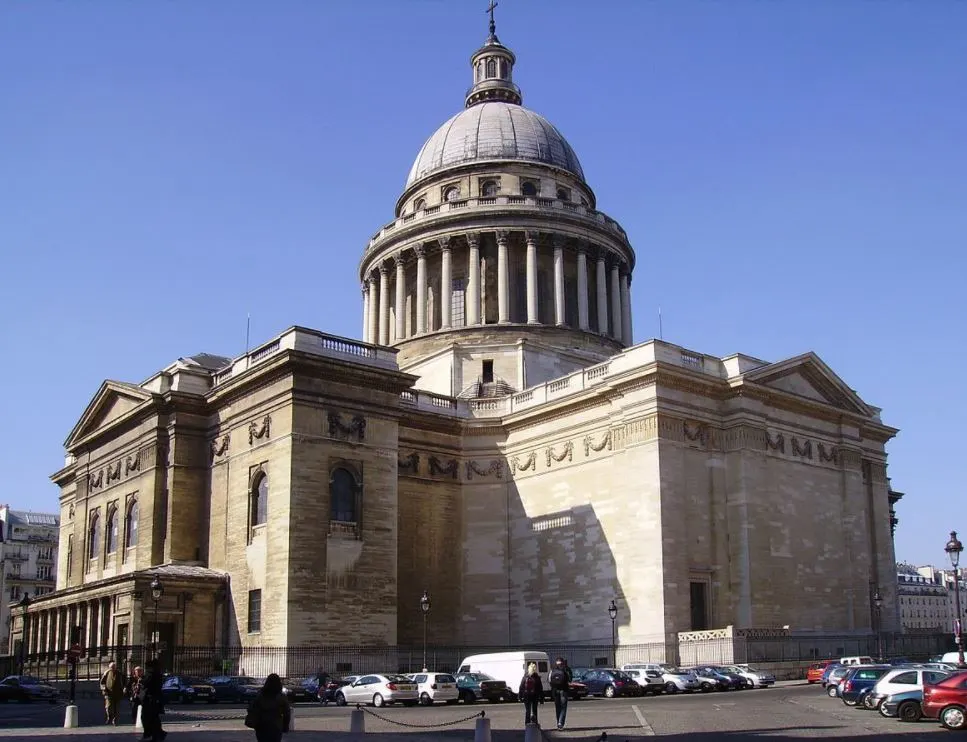
7. The building’s purpose was changed a year after it was completed
Just a year after the building was completed, its purpose as a church was changed by the newly installed government referred to as the “National Constituent Assembly.” A decree was issued on April 4, 1791, and this transformed the church into a “Temple of the People.”
Shortly after, the letters above the entrance saying “A grateful nation honors its great men” were added and the building was to become a mausoleum to honor the national heroes.
The first one of the be entombed in the Panthéon’s crypt was Honoré Gabriel Riqueti, Comte de Mirabeau, one of the leaders of the Revolution but whose remains were removed just 3 years later.
The oldest tomb is that of Voltaire (1694-1778), the famous French Philosopher whose ashes were entombed here following a lavish ceremony on July 21, 1791.
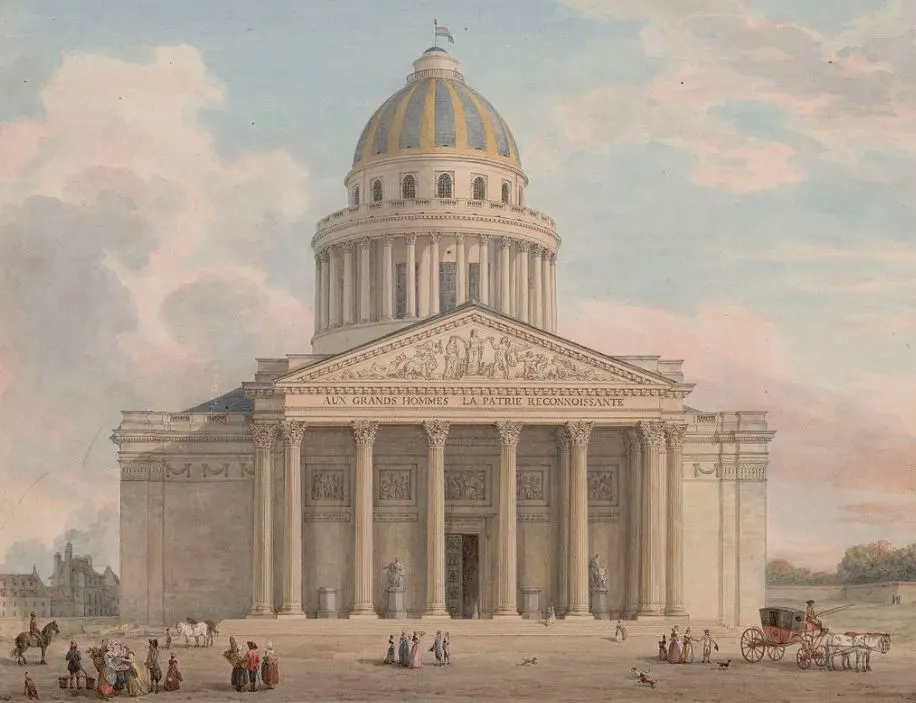
8. The dome was alternately capped with a cross and flag
The first change of purpose of the building surely wasn’t the last. Napoleon Bonaparte was the first to partially restore the building’s religious function in 1801 before it was completely turned into a church again during the Bourbon Restoration following his final fall in 1815.
The purposes alternated a few more times over the course of the 19th century which means that either a flag or a cross was used to cap the top of the dome. The cross today dates back to the events following the Paris Commune in 1871, the final time a (red) flag decorated the top of the building.

9. A pendulum has been hanging beneath the main dome since 1851
One of the most fascinating features inside the Panthéon in Paris, apart from the countless frescoes and paintings, is a 67-meter (220 feet) high pendulum that hangs from the main dome of the building.
It was installed here in 1851 by French physicist Léon Foucault (1819-1868) and demonstrates the rotation of the Earth. The original pendulum is on public display at the “Musée des Arts et Métiers,” which means the one in the Panthéon is a replica.
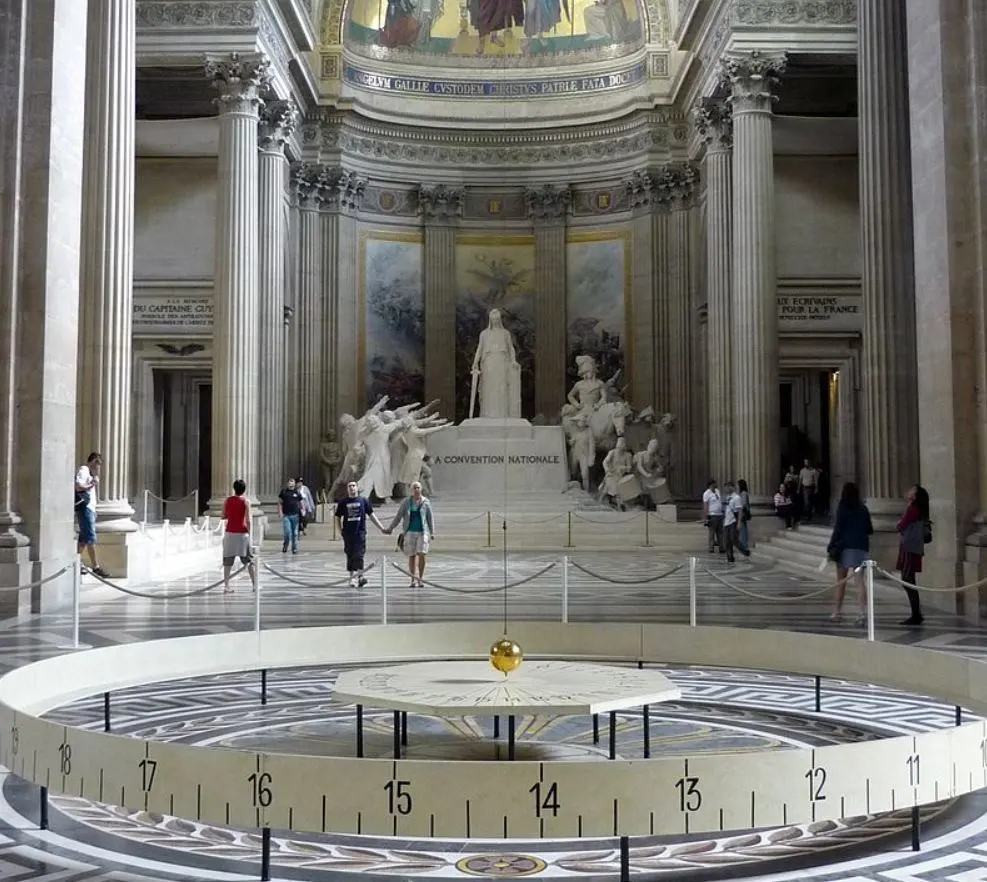
10. The sculptures on the pediment aren’t the original ones
The sculptures on the pediment above the building’s entrance were completed in 1837 by French sculptor David d’Angers (1788-1856). This means that these aren’t the original religious sculptures that used to decorate this area of the façade.
The central figure represents Liberty who distributes crowns to the great men of the nation. To the left, there are various important scientists, philosophers, and statesmen, including Rousseau, Voltaire, Lafayette, and Bichat.
To the right, we can see Napoleon Bonaparte and various members of the military, soldiers, and students of the prestigious “École Polytechnique,” an elite school for higher education.
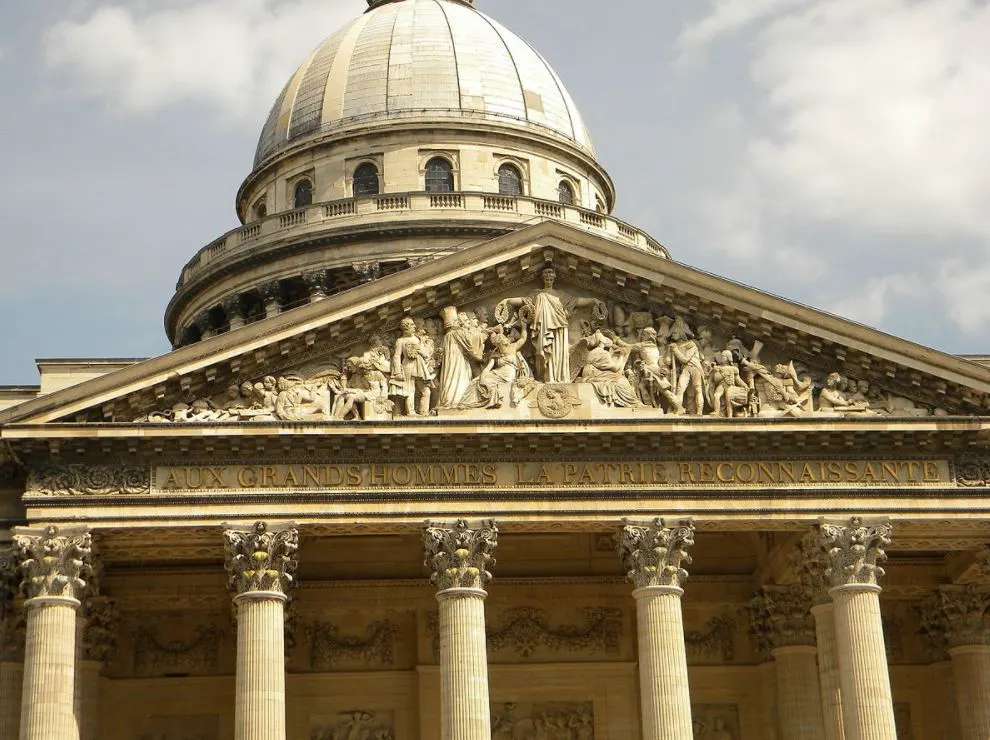
11. The façade of the building looked quite different upon completion
One of the most fascinating facts about the Panthéon in Paris is that the façade of the structure was changed shortly after the building was completed. It originally featured big windows which brought light into the church’s interior.
Because the purpose of the church was changed and the building was turned into a mausoleum, these windows were bricked up to prevent light from entering the building. This was purposely done to give the interior a gloomy appearance.

12. Not everybody can be buried inside the Panthéon in Paris
As of today, a total of 78 people (73 men and 5 women) have been entombed inside the crypt of the Panthéon. This limited number of people means that only National Heroes can be buried here.
The National Military Heroes have an equally impressive burial site as their final resting place, including the tomb of Napoleon Bonaparte, which is situated at Les Invalides.
